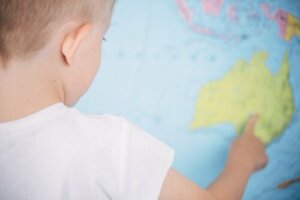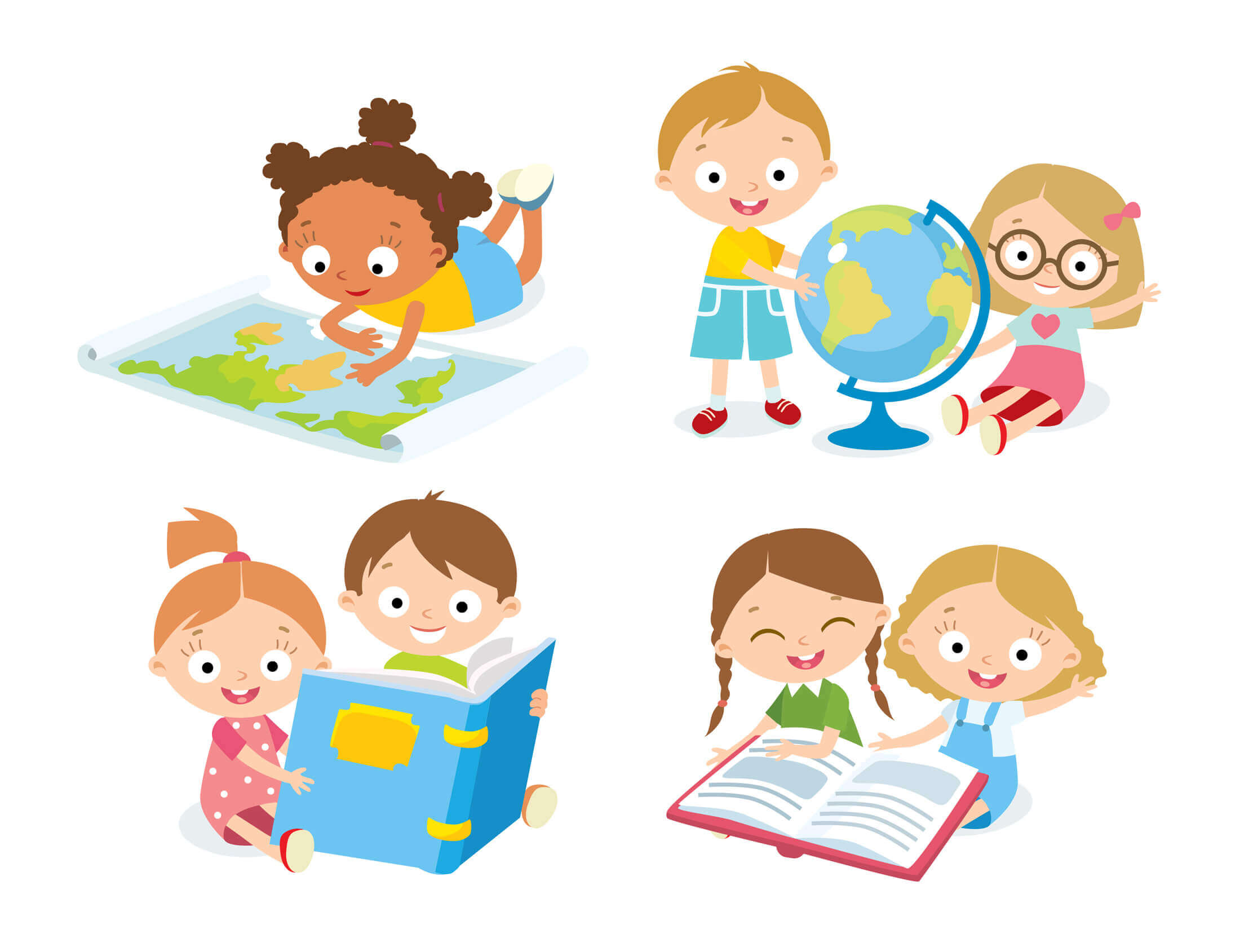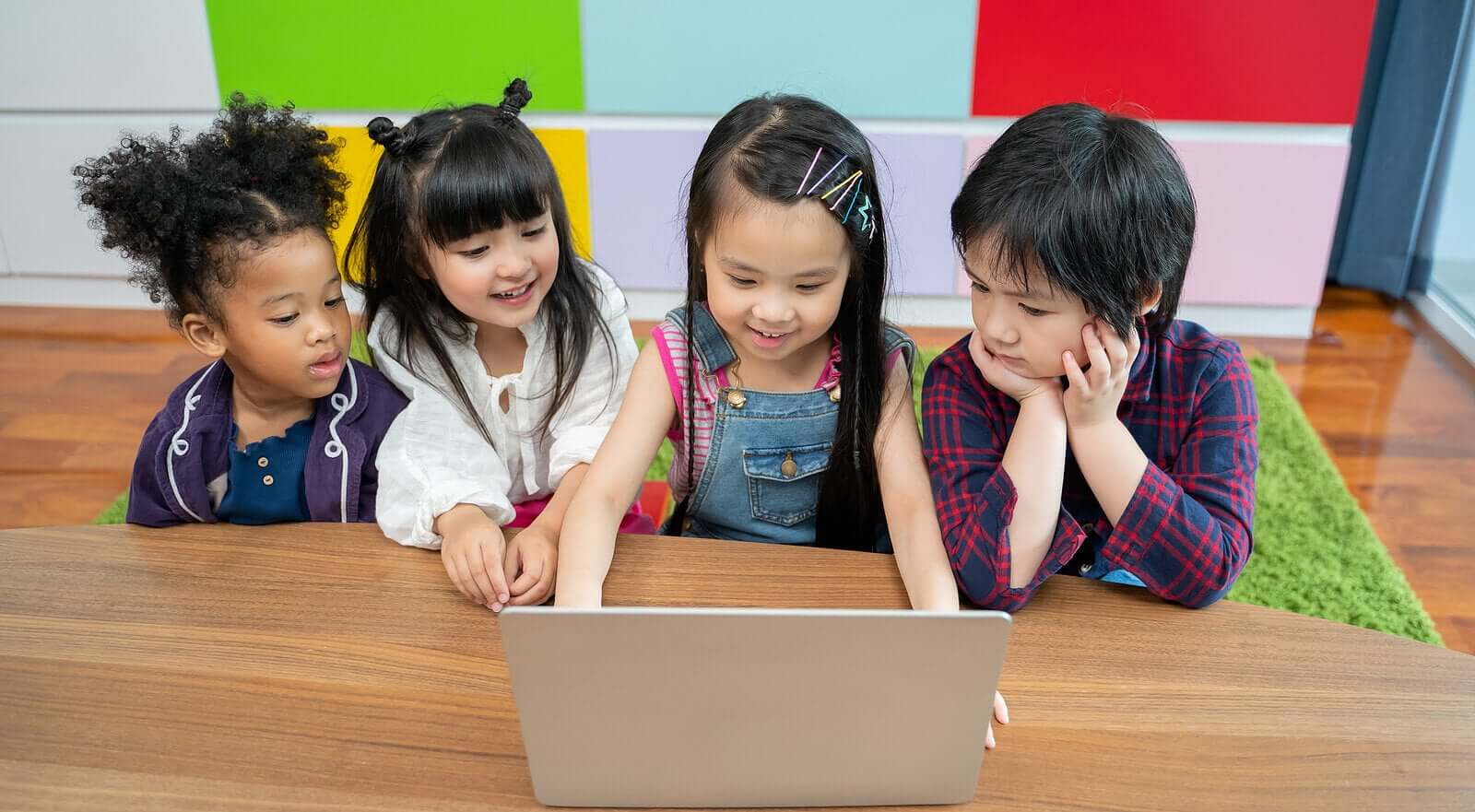5 Educational Resources to Teach Geography to Children

These resources to teach geography to children are designed to add dynamism and quality to the teaching process of this important subject. To choose them and use them correctly, it’s important to take into account the children’s age and the content that will be addressed. In the following paragraphs, we’ll describe some of them. You’ll be able to see how these resources can be incorporated into the teaching-learning process to make the most out of them.
Educational resources to teach geography
Geography covers five major themes:
- Location.
- Place.
- Movement.
- Region.
- Human-environment interaction.

Here are some resources you can utilize to develop these themes.
1. Printouts: Traditional and very effective
In this group of printed resources, you can find books, printed maps, newspapers, magazines, and globes. Books remain the most important of them all, both in paper and in digital form.
Maps are hard to use for little children who don’t know how to read yet. However, shapes and colors can help you introduce a geography topic. Some great tasks for them include craft-making such as creating a map using EVA foam and doing a puzzle.
Elementary school-aged children are ready to read the basic information on a map or a globe. So, they can already learn the locations and names of places. In high school, they can observe and interpret issues related to more complex aspects, such as economic activities or population density.
Support materials such as magazines and newspapers will help children find a connection between reality and the words written in books and maps.
2. Visual educational resources to teach geography: Images with content
Visual content has been given much importance due to technological advances in recent years. Videos, educational channels, and movies are great resources to teach geography to children. The audiovisual world is immense — images can help us get to know far-away and different places, cultures, and cities in a dynamic and enjoyable way.
3. Interactive resources: Interesting and dynamic
Interactive resources are those in which the child intervenes by getting involved with the topic directly instead of being a mere spectator. For the youngest children, these resources include creative games, such as creating a landscape using colored play-dough. These games will prove useful for the understanding of some basic geography concepts.
Children in elementary school and high school will be glad to participate in games of trips to meet other cultures and places. Another interesting activity is to make a trivia game with geography questions and answers. The whole family can play all together.
A new way to use these resources is through interactive games launched on the web. One of these is Mystery Skype, a project by Microsoft Education that connects children of different classrooms around the world.
4. Field research: Linking knowledge to reality
Outdoor trips and excursions, urban walks, or educational camps are high-efficiency educational resources to teach children geography. Through them, it’s possible to strengthen the knowledge acquired in the classroom, to teach the skills of observation and orientation in situ, to see the effects of mankind’s activity in the environment, and to connect map representations to objects they can see themselves.
5. Technological resources: Infinite and very entertaining
Information and communications technologies (ICT) have arrived in the classrooms and our lives. As a consequence, there is an incredible amount of educational resources that parents and teachers can use to teach children geography.
Apps, websites, blogs, and programs have become relevant allies of education. Yet, their efficiency depends on the way they’re handled.
Children have a head-start technology-wise. So, the soundness of your knowledge and your teaching methods will be vital for the incorporation of these resources. In this sense, here are some apps and programs you can benefit from:

- Google Maps.
- Google Earth.
- Geography games.
- Seterra.
- National Geographic World Atlas.
Today’s challenge is to make an appropriate use of the educational resources to teach geography
In general, education faces this century’s challenge of presenting more interesting and attractive content than the ones children can find on their computers with just one click.
Geography, for its part, has an advantage: there is a great variety of resources. The key is to use them correctly in order to avoid falling into the trap of using one innovative tool to find the same old results.
“If you just memorize all the capitals of the United States, you’re just skimming the surface of what geography is really about.”
– Audrey Mohan, former president of the National Council for Geographic Education –
The idea behind this incorporation of educational resources is that students find the learning process easier and that the learning content becomes more approachable, related to reality, and can be applied in real-life situations.
These resources to teach geography to children are designed to add dynamism and quality to the teaching process of this important subject. To choose them and use them correctly, it’s important to take into account the children’s age and the content that will be addressed. In the following paragraphs, we’ll describe some of them. You’ll be able to see how these resources can be incorporated into the teaching-learning process to make the most out of them.
Educational resources to teach geography
Geography covers five major themes:
- Location.
- Place.
- Movement.
- Region.
- Human-environment interaction.

Here are some resources you can utilize to develop these themes.
1. Printouts: Traditional and very effective
In this group of printed resources, you can find books, printed maps, newspapers, magazines, and globes. Books remain the most important of them all, both in paper and in digital form.
Maps are hard to use for little children who don’t know how to read yet. However, shapes and colors can help you introduce a geography topic. Some great tasks for them include craft-making such as creating a map using EVA foam and doing a puzzle.
Elementary school-aged children are ready to read the basic information on a map or a globe. So, they can already learn the locations and names of places. In high school, they can observe and interpret issues related to more complex aspects, such as economic activities or population density.
Support materials such as magazines and newspapers will help children find a connection between reality and the words written in books and maps.
2. Visual educational resources to teach geography: Images with content
Visual content has been given much importance due to technological advances in recent years. Videos, educational channels, and movies are great resources to teach geography to children. The audiovisual world is immense — images can help us get to know far-away and different places, cultures, and cities in a dynamic and enjoyable way.
3. Interactive resources: Interesting and dynamic
Interactive resources are those in which the child intervenes by getting involved with the topic directly instead of being a mere spectator. For the youngest children, these resources include creative games, such as creating a landscape using colored play-dough. These games will prove useful for the understanding of some basic geography concepts.
Children in elementary school and high school will be glad to participate in games of trips to meet other cultures and places. Another interesting activity is to make a trivia game with geography questions and answers. The whole family can play all together.
A new way to use these resources is through interactive games launched on the web. One of these is Mystery Skype, a project by Microsoft Education that connects children of different classrooms around the world.
4. Field research: Linking knowledge to reality
Outdoor trips and excursions, urban walks, or educational camps are high-efficiency educational resources to teach children geography. Through them, it’s possible to strengthen the knowledge acquired in the classroom, to teach the skills of observation and orientation in situ, to see the effects of mankind’s activity in the environment, and to connect map representations to objects they can see themselves.
5. Technological resources: Infinite and very entertaining
Information and communications technologies (ICT) have arrived in the classrooms and our lives. As a consequence, there is an incredible amount of educational resources that parents and teachers can use to teach children geography.
Apps, websites, blogs, and programs have become relevant allies of education. Yet, their efficiency depends on the way they’re handled.
Children have a head-start technology-wise. So, the soundness of your knowledge and your teaching methods will be vital for the incorporation of these resources. In this sense, here are some apps and programs you can benefit from:

- Google Maps.
- Google Earth.
- Geography games.
- Seterra.
- National Geographic World Atlas.
Today’s challenge is to make an appropriate use of the educational resources to teach geography
In general, education faces this century’s challenge of presenting more interesting and attractive content than the ones children can find on their computers with just one click.
Geography, for its part, has an advantage: there is a great variety of resources. The key is to use them correctly in order to avoid falling into the trap of using one innovative tool to find the same old results.
“If you just memorize all the capitals of the United States, you’re just skimming the surface of what geography is really about.”
– Audrey Mohan, former president of the National Council for Geographic Education –
The idea behind this incorporation of educational resources is that students find the learning process easier and that the learning content becomes more approachable, related to reality, and can be applied in real-life situations.
All cited sources were thoroughly reviewed by our team to ensure their quality, reliability, currency, and validity. The bibliography of this article was considered reliable and of academic or scientific accuracy.
- GOBIERNO DE ESPAÑA. Instituto Geográfico Nacional: http://www.ign.es/web/ign/portal/recursos-educativos
- UNIVERSIDAD DE BURGOS: https://riubu.ubu.es/bitstream/handle/10259/5211/Gonz%C3%A1lez_Sacrist%C3%A1n.pdf?sequence=1&isAllowed=y
- NATIONAL GEOGRAPHIC: https://www.nationalgeographic.com/search?q=world+atlas
- MICROSOFT EDUCATION: https://eligeeducar.cl/ideas-para-el-aula/con-este-juego-tus-alumnos-aprenderan-geografia-con-estudiantes-de-todo-el-mundo/
- KQED SCIENCE: https://www.facebook.com/MindShift.KQED/posts/2393314350704470
This text is provided for informational purposes only and does not replace consultation with a professional. If in doubt, consult your specialist.








